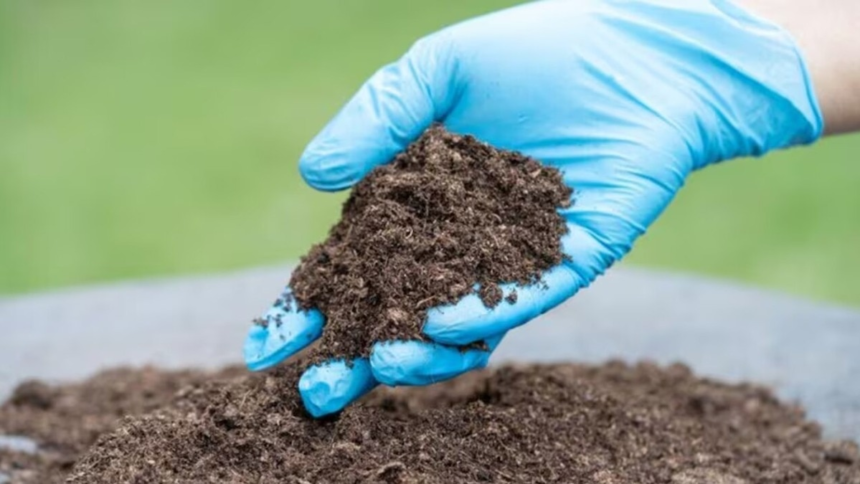Main Points In Hindi (मुख्य बातें – हिंदी में)
यहां परsoil degradation (मिट्टी का अस्वास्थ्यकरण) पर मुख्य 3 से 5 बिंदु दिए गए हैं:
-
मिट्टी का अस्वास्थ्यकरण: मिट्टी का अस्वास्थ्यकरण एक गंभीर समस्या बन गई है, जिसकी वजह से फसल उगाना कठिन हो गया है। मिट्टी के deteriorating स्वास्थ्य के कारण किसानों को अधिक मेहनत करनी पड़ती है।
-
जनसंख्या वृद्धि और मिट्टी की स्थिति: देश की जनसंख्या बढ़ती जा रही है, जबकि मिट्टी की स्थिति स्थिर है, जिससे फसल उत्पादन में कठिनाई हो रही है। इस स्थिति को सुधारने के लिए किसान रासायनिक उर्वरकों का उपयोग कर रहे हैं, जिससे मिट्टी और अधिक बीमार हो रही है।
-
मिट्टी स्वास्थ्य कार्ड योजना: केंद्र सरकार की मिट्टी स्वास्थ्य कार्ड योजना के तहत, किसानों को उनके खेतों के लिए एक कार्ड दिया जाता है जिसमें मिट्टी के पोषक तत्वों की कमी और अधिकता के बारे में जानकारी होती है। यह कार्ड किसानों को यह जानने में मदद करता है कि उन्हें किन पोषक तत्वों को बढ़ाना या घटाना है।
-
मिट्टी परीक्षण और पोषण प्रबंधन: किसानों को प्रत्येक तीन वर्ष में मिट्टी के नमूने लेने की सलाह दी जाती है, और इस प्रक्रिया को सरकारी कर्मचारियों और युवा छात्रों द्वारा पूरा किया जाता है। सही जानकारी के आधार पर, farmers अपने खेतों के पोषण को बेहतर बना सकते हैं।
- न्यूट्रिएंट सलाह और उर्वरक उपयोग: मिट्टी स्वास्थ्य कार्ड में किसानों को यह बताया जाता है कि किस पोषक तत्व की कमी है और किस मात्रा में उर्वरक का उपयोग किया जाना चाहिए। इससे किसान अपनी मिट्टी की सेहत को सुधारने के लिए उचित कदम उठा सकते हैं।
Main Points In English(मुख्य बातें – अंग्रेज़ी में)
Here are 4 main points from the provided text about soil degradation and the Soil Health Card (SHC) scheme:


-
Soil Degradation Issue: Soil degradation has become a significant problem, leading to reduced soil productivity. As the population increases, farmers face challenges in maintaining crop yields from deteriorating soil conditions, often resorting to chemical fertilizers, which further exacerbate soil health issues.
-
Soil Health Card Initiative: The Central Government’s Soil Health Card scheme provides farmers with valuable information tailored to their specific fields. Each card contains data on 12 key nutrients, helping farmers assess the nutrient levels in their soil and providing guidance on necessary adjustments.
-
Nutrient Management: The Soil Health Card offers personalized advice regarding the addition or reduction of nutrients, including NPK (nitrogen, phosphorus, potassium), sulfur, zinc, and others. This enables farmers to effectively manage soil nutrients, aiming to restore soil health and improve crop productivity.
- Soil Sampling Protocol: Farmers are encouraged to take soil samples every three years, with a structured sampling process managed by state governments and educational institutions. This ensures that soil testing is conducted accurately and consistently, allowing for informed decisions about soil health and nutrient management.
Complete News In Hindi(पूरी खबर – हिंदी में)
मिट्टी का खराब होना, यानी मिट्टी का बर्बाद होना, एक बड़ा सवाल बन गया है। इसमें मिट्टी इतनी थक जाती है कि उस पर फसल उगाना तो संभव है, लेकिन इसके लिए बहुत मेहनत करनी पड़ती है। दूसरे शब्दों में, मिट्टी पुरानी हो जाती है और आप उस पर ज्यादा श्रम नहीं लगा सकते। वर्तमान समय में, देश की करोड़ों लोगों को भोजन देने के लिए हमें कृषि मिट्टी पर निर्भर रहना पड़ता है। जनसंख्या रोज़ बढ़ रही है, जबकि मिट्टी वैसी की वैसी है। ऐसे में, बीमार मिट्टी से उत्पादन पाने के लिए किसान मिट्टी में कई तरह की रासायनिक खाद डाल रहे हैं, जो मिट्टी को और भी बीमार बना रही हैं। वर्तमान में, मिट्टी के खराब होने की दर लगभग 30 प्रतिशत बताई जा रही है। ऐसी स्थिति में, हमें उन उपायों के बारे में जानना होगा जो खराब मिट्टी को स्वस्थ बना सकते हैं।
मिट्टी के स्वास्थ्य में सुधार करने के लिए आप केंद्रीय सरकार की योजना ‘मिट्टी स्वास्थ्य कार्ड’ का उपयोग कर सकते हैं। इस योजना में, किसानों को उनके हर खेत के लिए एक कार्ड दिया जाता है, जिसे मिट्टी स्वास्थ्य कार्ड कहा जाता है। इस कार्ड में किसानों की खेती से संबंधित 12 मुख्य जानकारियाँ होती हैं। इस जानकारी के आधार पर, किसान अपने खेतों में पोषक तत्वों की कमियों और अधिकता के बारे में जान सकते हैं।
इसके आधार पर, किसान अपने खेतों में पोषक तत्वों का प्रबंधन करके मिट्टी को स्वस्थ बना सकते हैं। इस कार्ड में किसान को NPK, सल्फर, जिंक, फास्फोरस, मैग्नीशियम, बोरॉन और pH के बारे में जानकारी दी जाती है। इसके आधार पर किसान को बताया जाता है कि उसके खेत की मिट्टी में किस पोषक तत्व की मात्रा बढ़ाने या घटाने की आवश्यकता है।
मिट्टी स्वास्थ्य कार्ड का उपयोग कैसे करें
मिट्टी स्वास्थ्य कार्ड में किसानों को उनके खेतों के आकार के अनुसार पोषक तत्वों के बारे में सलाह दी जाती है। कार्ड में लिखा होता है कि किस खेत में किस पोषक तत्व की कमी है और उसे कितनी मात्रा में जोड़ना है। इसके अलावा, किसानों को खेत में खाद डालने की मात्रा के बारे में भी जानकारी दी जाती है। इस कार्ड के माध्यम से किसानों को बताया जाता है कि वे अपनी मिट्टी को कैसे सुधार सकते हैं और इसके लिए कौन से पोषक तत्व और खादें जरूरी हैं। कार्ड में दी गई सलाह के आधार पर किसान अपनी मिट्टी की सेहत में सुधार कर सकते हैं।
मिट्टी का नमूना लेने के नियम
खेत से मिट्टी का नमूना हर तीन साल में लेने का नियम है। इसके लिए राज्य सरकारें अपने कर्मचारियों को नियुक्त करती हैं या यह काम किसी आउटसोर्सिंग एजेंसी को सौंप देती हैं। सरकार इस काम में क्षेत्रीय कृषि महाविद्यालयों और विज्ञान महाविद्यालयों के छात्रों को भी शामिल करती है। मिट्टी के नमूने हर साल दो बार, रबी और खरीफ फसलों की कटाई के बाद लिए जाते हैं। इसके लिए, विशेषज्ञ खेत में V आकार में मिट्टी का एक टुकड़ा काटकर 15-20 सेमी की गहराई से नमूना लेते हैं। ये नमूने खेत के चार कोनों और बीच से एकत्र किए जाते हैं और फिर मिलाए जाते हैं। बाद में, उसी का एक हिस्सा अंतिम नमूने के लिए लिया जाता है और इसे ठंडी जगह पर रखा जाता है। फिर वही नमूना प्रयोगशाला में भेजा जाता है।
आपके लिए पढ़ें: ये 5 कृषि उपाय जलवायु परिवर्तन के प्रभाव को कम करेंगे, अमेरिकी रिपोर्ट में खुलासा हुआ है।
Complete News In English(पूरी खबर – अंग्रेज़ी में)
Soil degradation i.e. spoilage of soil has become a big problem. In this the soil becomes so worn out that it grows crops, but only after a lot of effort. In other words, the soil becomes old and hence you cannot provide more labour. At present, to feed crores of people of the country, they have to depend on the agricultural soil and the farming done on it. The population is increasing day by day while the soil remains the same. To get produce from the same sick soil, farmers are adding fertilizer to the soil in which many types of chemicals are mixed. These chemicals are making the soil more sick. The rate of soil degradation is currently said to be 30 percent. In such a situation, we need to know about those measures which can make the dilapidated soil healthy.
In improving the health of the soil, you can take help of the Central Government’s scheme Soil Health Card. In this scheme, farmers are given a card for each of their fields, which is named Soil Health Card. In this card, 12 main information about the farmer’s farming is given. On the basis of this information, farmers can know about the deficiency and excess of nutrients in their fields.
Also read: Farmers will be able to get the soil of their fields tested from their home, yield will be high, soil testing labs will increase.
On this basis, farmers can make the soil healthy by managing the nutrients in their fields. In this card, the farmer is given information about NPK, sulphur, zinc, phosphorus, magnesium, boron and pH. On the basis of this, the farmer is told which nutrient quantity needs to be increased or decreased in the soil of his field.
How to use SHC
In the Soil Health Card, farmers are given advice about nutrients based on their land holdings. It is written in the card that which nutrient is lacking in a particular field and how much quantity of that nutrient is to be added to it. Apart from this, farmers are also informed about the quantity of fertilizer to be applied in the field. Through this card, farmers are told how they can improve their soil and which nutrients and fertilizers are necessary to use for that. Based on the advice given in the card, farmers can improve the health of the soil.
rules for taking soil sample
There is a rule to take soil sample from the field every three years. For this, state governments have hired their own staff or this work is given to some outsourcing agency by the government. The government also engages students from regional agricultural colleges and science colleges in this work. Soil samples are taken twice a year after harvesting of Rabi and Kharif crops. For this, after cutting the soil in V shape in the field, a sample is taken from a depth of 15-20 cm by experts. These samples are taken from the four corners and center of the field and they will all be mixed. Then a part of the same is taken for the final sample. Then it is left in a shady area. Later the same sample is sent to the lab.
Also read: These 5 farming measures will reduce the impact of climate change, revealed in American report










